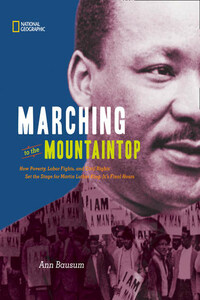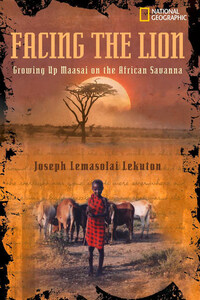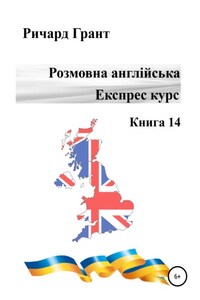Text copyright © 2008 Judith Bloom Fradin and Dennis Brindell Fradin
Published by the National Geographic Society.
All rights reserved. Reproduction of the whole or any part of the contents without written permission from the National Geographic Society is strictly prohibited.
Founded in 1888, the National Geographic Society is one of the largest nonprofit scientific and educational organizations in the world. It reaches more than 285 million people worldwide each month through its official journal, NATIONAL GEOGRAPHIC, and its four other magazines; the National Geographic Channel; television documentaries; radio programs; films; books; videos and DVDs; maps; and interactive media. National Geographic has funded more than 8,000 scientific research projects and supports an education program combating geographic illiteracy.
For more information, please call 1-800-NGS-LINE
(647-5463) or write to the following address:
National Geographic Society
1145 17th Street N.W.
Washington, D.C. 20036-4688
U.S.A.
Visit us online at www.nationalgeographic.com/books
For information about special discounts for bulk purchases, please contact National Geographic Books Special Sales: [email protected]
For rights or permissions inquiries, please contact National Geographic Books Subsidiary Rights: [email protected]
Library of Congress Cataloging-in-Publication Data available available on request.
ISBN: 978-1-4263-0980-9
National Geographic Society
John M. Fahey, Jr., President and Chief Executive Officer
Gilbert M. Grosvenor, Chairman of the Board
Tim T. Kelly, President, Global Media Group
Nina D. Hoffman, Executive Vice President; President, Book Publishing Group
Staff for This Book
Nancy Laties Feresten, Vice President, Editor-in-Chief of Children’s Books
Bea Jackson, Director of Design and Illustration Carl Mehler, Director of Maps
Amy Shields, Executive Editor
Jim Hiscott, Art Director
Lori Epstein, Illustrations Editor
Grace Hill, Associate Managing Editor
Priyanka Lamichhane, Assistant Editor
Lewis R. Bassford, Production Manager
Nicole Elliott, Manufacturing Manager
Jennifer A. Thornton, Managing Editor
R. Gary Colbert, Production Director
Susan Borke, Legal and Business Affairs
Photo Credits
Cover, John Russell/ AFP/ Getty Images; Back, Bettmann/ Corbis; spine, N. Silcock/ Shutterstock; 2-3, Rick Doyle/ Corbis; 5, Hermann M. Fritz, Georgia Institute of Technology; 6, Jose C. Borrero, University of Southern California; 8 both, IKONOS satellite imagery by GeoEye/ CRISP-Singapore; 9, AFP/ Getty Images; 10 both, Joanne Davis/ Polaris; 11 left & right, Joanne Davis/ Polaris; 11 bottom, Mark Pearson; 12, PH3 Tyler J. Clements, United States Navy; 13, Louis Evans, Curtin University of Technology; 14, Image: S. Lombeyda, Caltech Center for Advanced Computing Research; V. Hjorleifsdottir and J. Tromp, Caltech Seismological Laboratory; R. Aster, Reprinted with permission from Science Volume 308, Number 5725 (20 May 2005); 15, U.S. Geological Survey; 16, U.S. Geological Survey; 18, O.H. Hinsdale Wave Research Laboratory, Oregon State University; 19, Bretwood Higman, University of Washington; 20, NASA; 21 both, Koji Sasahara/ Associated Press; 22, Jose C. Borrero, University of Southern California; 24, Pacific Tsunami Museum; 27, Naval Historical Foundation; 29, Used with permission from the Stars and Stripes. © 1964, 2008 Stars and Stripes; 30, Corbis; 32, NOAA National Data Buoy Center; 33, NOAA West Coast and Alaska Tsunami Warning Center; 34, NOAA National Data Buoy Center; 35, Aaron Favila/ Associated Press; 36, NOAA National Data Buoy Center; 37, David Heikkila/ iStockphoto.com; 38, Tim Laman/ National Geographic Image Collection; 40-41, Adam Powell/ Taxi/ Getty Images; 42, Tatyana Makeyeva/ AFP/ Getty Images; 43, U.S. Geological Survey; 45, Bazuki Muhammad/ Reuters/ Corbis.
Version: 2017-07-06














